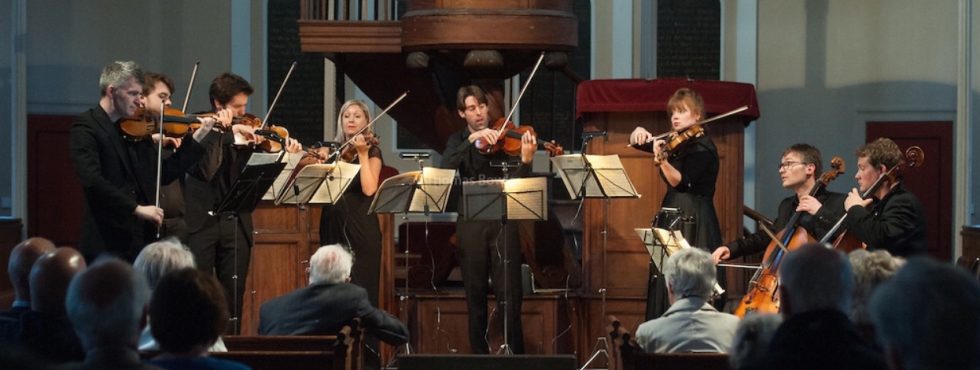About
A Proprietary Chapel
St John’s Chapel is a rare surviving example of a Georgian proprietary chapel retaining most of its original early nineteenth century features. Proprietary chapels were a solution to the problem of insufficient capacity within existing parish churches to meet the spiritual needs of a growing 18th and early 19th century urban population.
Although a proprietary chapel was firmly part of the Church of England it was built and run as a commercial venture. The money to build and run it – including paying the minister’s salary – came from share issues and the sale and rent of pews; some of the original box pews in the gallery of St John’s still have paper labels offering them for rent.
Opened 1813
The chapel was the work of architect James Elmes (1782-1862). It is a good example of the rather severe Georgian classical church design of the period with Greek Revival detailing, including a fine Portland stone campanile or bell tower.
The interior is light and airy, with big windows and a gallery running round all sides – it has been compared to a theatre. At the east end, facing the entrance, is the impressive and distinctive three-decker pulpit. It is made of American black birch. The lower desk was for the clerk who led the singing of the psalms during which the minister occupied the middle desk. To preach his sermon – seldom less than an hour – the minister would go up to the top pulpit where he could see, and be seen, by all the congregation, and keep an eye on the clock in the gallery opposite.
The chapel organ – a fine Georgian instrument by John Pyke England – was originally in the gallery behind the pulpit. It was eventually dismantled in 1980. It is a Friends long-term ambition to restore the organ; the chapel has particularly good acoustics.
Hampshire Chronicle, Monday, 1st June, 1812 –
‘The foundation stone of the new chapel, now building in this city (Chichester), was laid on Monday, by W. Dearling Esq., late Sheriff of this county (Sussex), attended by the Archdeacon and Clergy of this diocese and the Mayor and Corporation of this city’…
Hampshire Chronicle, Monday, 12th April, 1813 –
‘The chapel which we have noticed as building here (Chichester) is now nearly finished. It is to be named St John’s and is a handsome edifice and large. We have no doubt of its being frequented by a large congregation’
[/EXPAND]
Recent History An illustrated guidebook giving a detailed history and description of the chapel by Alan H.J.Green, is available at the chapel. A more detailed account of the chapel and its immediate surroundings can be found in St John’s Chapel and the New Town, Chichester, Alan H.J.Green, Phillimore, Chichester, 2005.
In its Victorian heyday the chapel regularly had a congregation of between 500 and 600 but during the 20th century numbers continued to fall and in 1973 St John’s was finally closed for public worship before passing to the Redundant Churches Fund (now The Churches Conservation Trust). Major structural works to restore the building were begun in 2003 and the Friends of St John’s was founded in 2005 to support the work of The Churches Conservation Trust to promote public awareness of this important Grade I Listed building and encourage greater use of it by the local community. The chapel is used as a venue for a variety of arts and cultural events. To hire the chapel go to contact us
A Learning Resources Pack describing the Chapel is available here as a PDF download

